A 17 Nights / 18 Days Wellness Odyssey through Sri Lanka with Globeenjoy
This itinerary is not just a holiday,it’s a story of rebirth. From the whispers of ancient Ayurveda in the cultural heartland to the mindful calm of the ocean breeze in the south, every step connects you deeper to nature, culture, and your inner self.
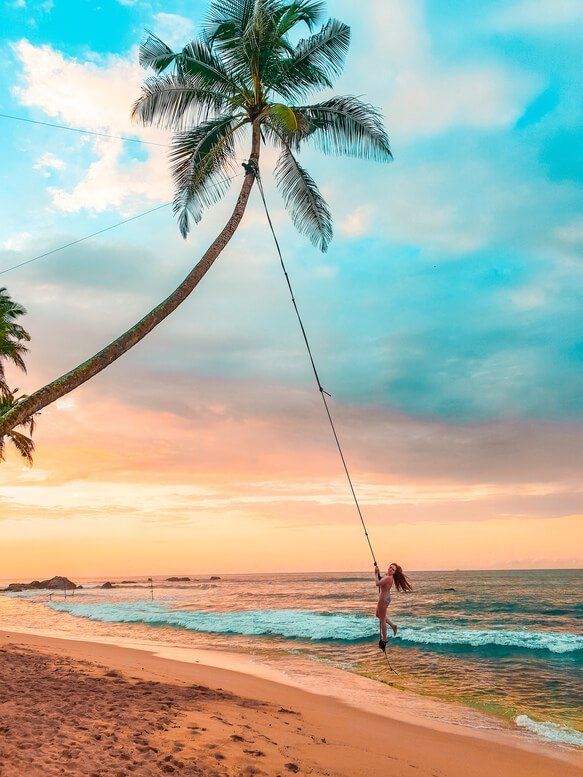
Your guide meets you at the airport in a comfortable, air-conditioned vehicle and drives you to the coast. In Negombo you’ll walk the old Dutch canal banks and visit the lively fish market, an authentic introduction to everyday Sri Lankan life. The coastal breeze is your first healer: use this day to shake off jet lag with a gentle beach walk at sunset, hydrate, and let the rhythm of the ocean reset your circadian clock. Your guide will confirm your Ayurveda intake consultation for Day 2 and review any dietary preferences or health notes.
Why visit: Negombo’s fishing traditions and colonial canals show a living slice of Sri Lankan culture, restful, grounding, and perfect to begin a wellness retreat.
Practical: Light clothing, hat, comfortable sandals. Avoid heavy alcohol the night before the first treatment. Image idea: sunset over Negombo lagoon with silhouette of fishing boats.
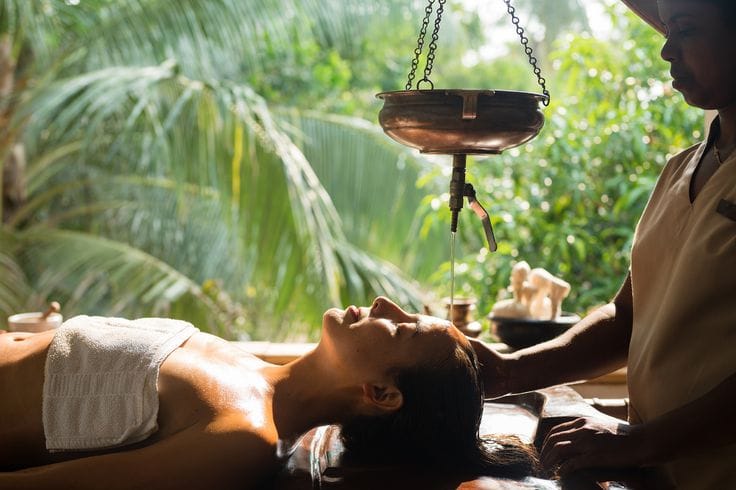
You travel inland into the Cultural Triangle. At an authentic Ayurvedic sanctuary, your first comprehensive consultation with an Ayurvedic physician (Vaidya) establishes your dosha (body-mind constitution) and a personalized treatment plan. Expect gentle therapies: oils, herbal poultices (Pinda Sweda), steam (Swedana), and calming Abhyanga (full body oil massage). Your guide explains the 3-thousand-year history of Ayurveda in Sri Lanka, a living tradition where herbal medicine and daily routines were historically recommended by royal physicians.
Why visit: A proper Ayurvedic consultation aligns treatments to your constitution; early evaluation allows therapeutic continuity through the itinerary.
Practical: Fast for a few hours before some treatments if instructed; wear loose cotton; your guide will arrange private female/male therapists if requested. Image idea: close-up of herbal oils, therapist preparing herbal poultice.
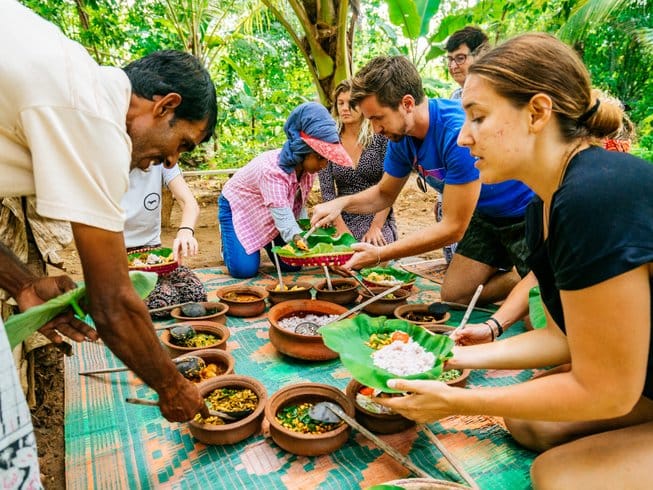
Morning therapy continues with personalized Ayurvedic care. Midday, your guide escorts you to a nearby village where Globeenjoy’s community program links travelers with local farmers. Join vegetable picking and seasonal harvests, a therapeutic practice that reconnects you to food sources, rhythm, and community. Sharing a simple, home-cooked meal with villagers demonstrates why local diets, rich in greens and spices, are integral to Sri Lankan wellness.
Why visit: Community engagement is proven to boost wellbeing through meaningful social contact and hands-on food literacy
Practical: Wear shoes you don’t mind getting dusty; bring a light scarf for sun protection. Image idea: hands harvesting greens, smiles around a village cooking hearth.
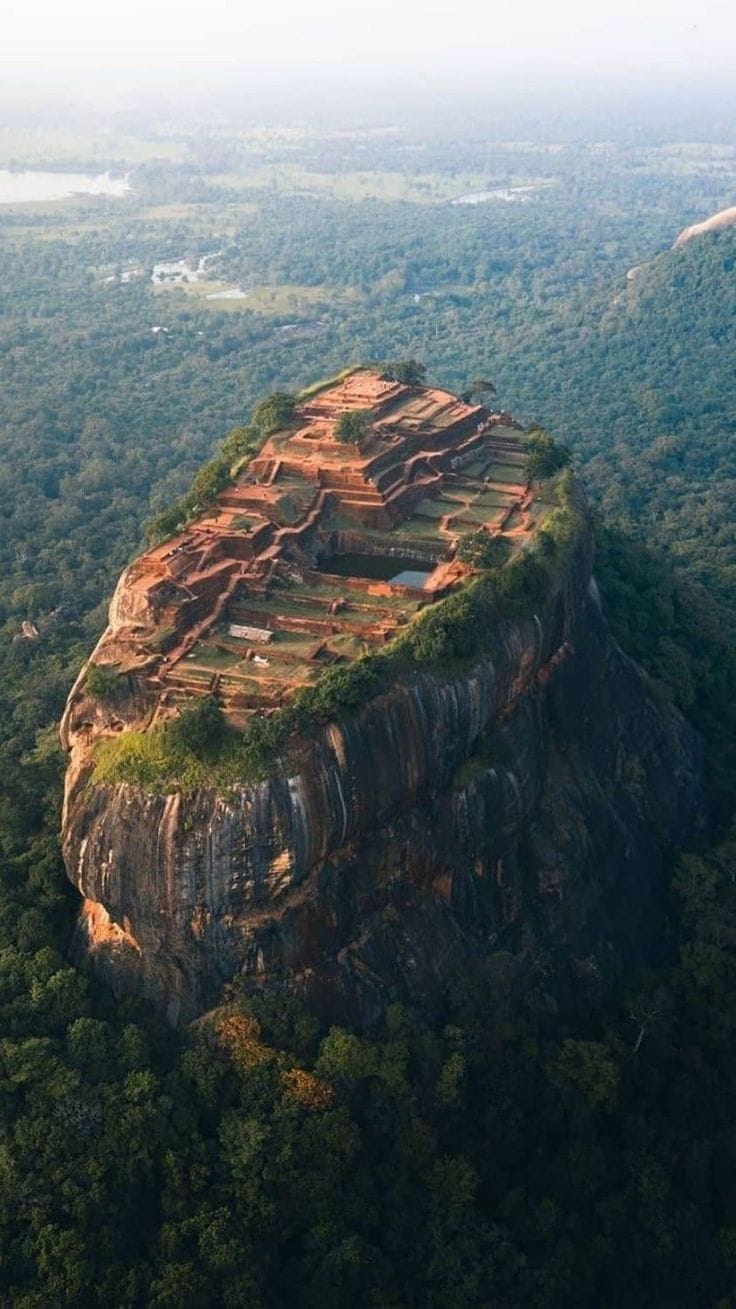
Your guide leads an early ascent of the Sigiriya Rock Fortress, the UNESCO-inscribed “Lion Rock” built in the 5th century by King Kashyapa. Learn about the frescoes, water gardens (ancient hydraulic engineering), and the story of royal refuge and betrayal that make Sigiriya an archaeological marvel. After the climb and recovery tea, you unwind with a restorative yoga session at a shaded garden overlooking the plains — a perfect fusion of active exploration and mindful restoration.
Why visit: Sigiriya is one of Sri Lanka’s most important archaeological sites — visiting at dawn reduces heat and crowds, and gives you clear light for photography.
Practical: 1–2 hour climb, wear sturdy shoes, bring water and sun protection. Ask your guide about early-start permits to beat the crowds. Image idea: yogi in a restorative pose with Sigiriya looming behind.
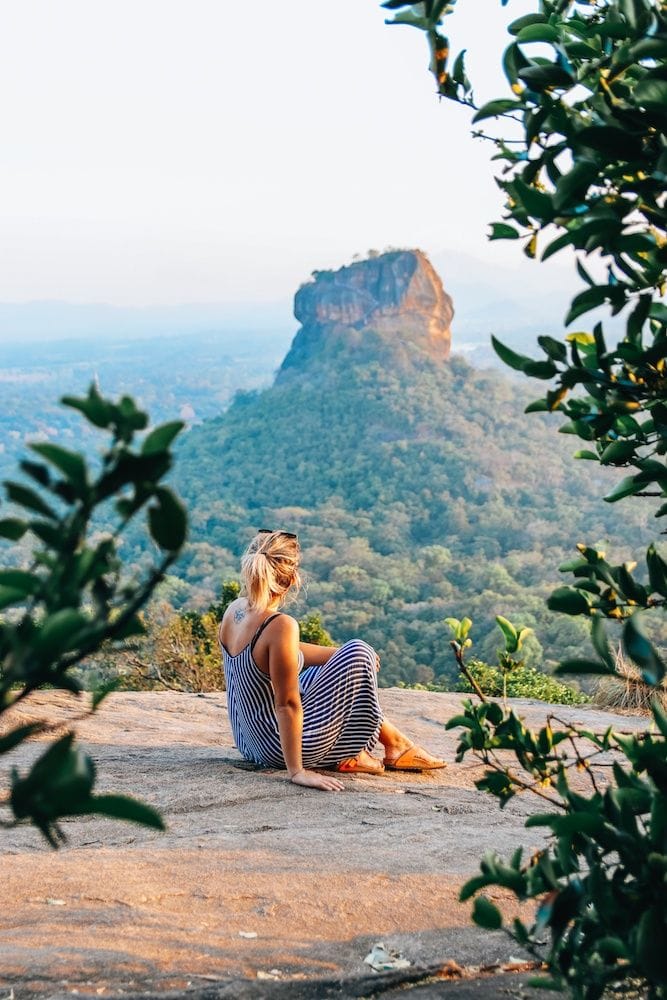
A shorter climb to Pidurangala Rock offers a quieter, rawer summit and one of the most breathtaking vantage points to watch sunset over Sigiriya. Here, your guide leads a guided meditation session perched above the jungle, a simple sitting or breathwork practice that grounds you after days of therapy and gentle exertion. Your guide shares local lore about monastic life in these rocks and the historical context of the area.
Why visit: Pidurangala is less commercialized than Sigiriya and ideal for contemplative practices.
Practical: 30–60 minute climb; wear layered clothing for changing evening temperatures. Image idea: meditator silhouetted on Pidurangala at dusk.

Back at the Ayurvedic center, continue your tailored therapies. This deeper session may include detoxifying oils, herbal baths, and a consultation to adjust your diet for maximum benefit. Learn from the Vaidya about Sri Lankan herbal pharmacopeia: gotu kola, neem, sesame oil, and traditional decoctions used for digestion and sleep.
Why visit:Repeated therapies during a retreat compound benefits — improved digestion, better sleep, and reduced muscular tension.
Practical: Expect restful downtime after treatments; your guide will schedule light walks or meditation for recovery. Image idea: open-air treatment pavilion with greenery.

You travel toward the Kandy plateau. At the Temple of the Tooth Relic (Sri Dalada Maligawa),your guide explains the relic’s unique role in Sri Lankan history: possession of the tooth relic historically legitimized kingship, and its ceremonies continue with daily rituals attended by pilgrims. Attend a guided meditation or blessing in the temple precinct (observe respectful dress code: shoulders and knees covered).
Why visit:It’s the living spiritual heart of Sri Lanka and a profound place to witness devotional practice and cultural continuity.
Practical:Visit in the morning to avoid crowds; retain silence and remove footwear in the precincts. Your guide will suggest appropriate times to view the puja. Image idea: temple lamps and offering plates.
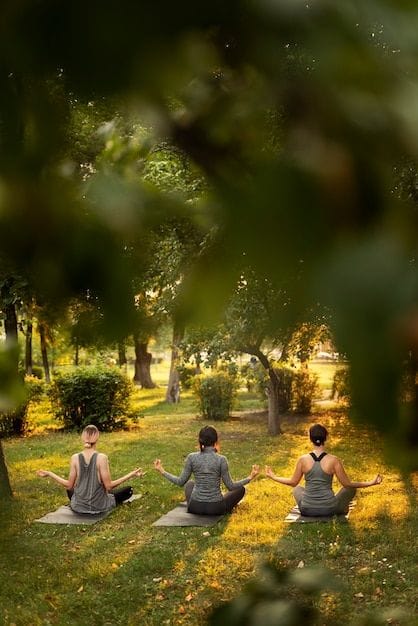
A morning yoga session in a local forest sanctuary (Uawaththa Kele style woodland) reconnects breath with bird calls and filtered light. Your guide explains the forest’s ecology and local conservation efforts, practicing in nature increases parasympathetic activation (deep rest) and reduces cortisol. This is a day of gentle movement, breathwork, and sensory reset.
Why visit: Forest bathing plus yoga produces measurable improvements to stress markers and mood.
Practical: Bring a yoga mat or use one provided; wear long sleeves early morning to deter insects. Image idea: group yoga in a sun-dappled forest clearing.

A day in the Knuckles Mountain Range, a UNESCO-nominated landscape, takes you to Huluganga Falls and on moderate treks across ridges. The Knuckles are famed for endemic plants, medicinal herbs, and cool microclimates. Your guide will interpret the geology, biodiversity and the area’s role in Sri Lanka’s water catchment systems, key to island ecology.
Why visit:The Knuckles offer highland biodiversity and stunning panoramas without long, strenuous climbs. It’s ideal for mindful hikes and nature study.
Practical: 3–5 hour trek options; wear hiking footwear, bring rain jacket (mountain weather can change fast). Image idea: hiker looking down a misty valley with waterfall below.

After a morning treatment, spend the afternoon in a cooking demonstration with a local chef focusing on Ayurvedic spice uses, cinnamon, cardamom, turmeric and pandan leaf. Your guide explains how spices function as both flavor and medicine in Sri Lankan kitchens: anti-inflammatory turmeric, digestion-supporting cumin, and warming cinnamon.
Why visit: Learning how to cook with healing spices empowers participants to continue Ayurvedic principles at home.
Practical: Note food allergies in advance; expect to taste and take home a small spice sachet. Image idea: mortar & pestle, hands grinding spices.
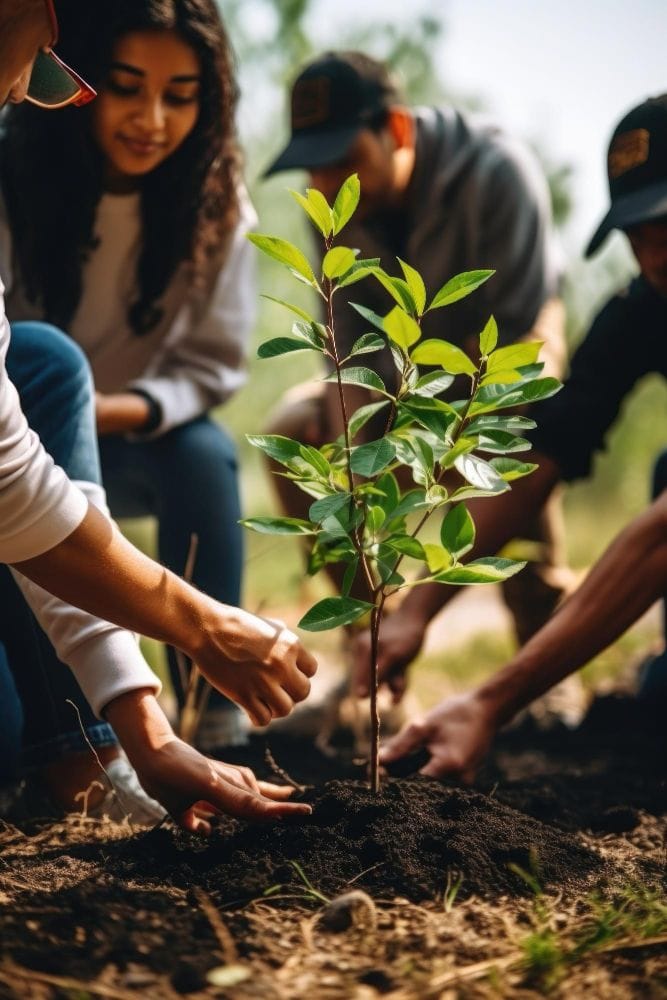
Begin with a meaningful tree-planting ceremony in a local reforestation project, you’ll plant a native species and learn about its ecological role. Later stroll the Peradeniya Royal Botanical Gardens, established in 1821 and home to thousands of species including giant Javan fig trees and royal palms. Your guide will point out historical aspects (the garden’s links to British botanical research) and medicinal plants used in Ayurveda.
Why visit: Botanical knowledge deepens understanding of plant-based healing and supports conservation. The planting is hands-on legacy work.
Practical: Wear garden-ready shoes, bring gloves if desired. Expect 1–2 hours in the botanical garden. Image idea: guest planting a sapling beside an ancient palm alley.
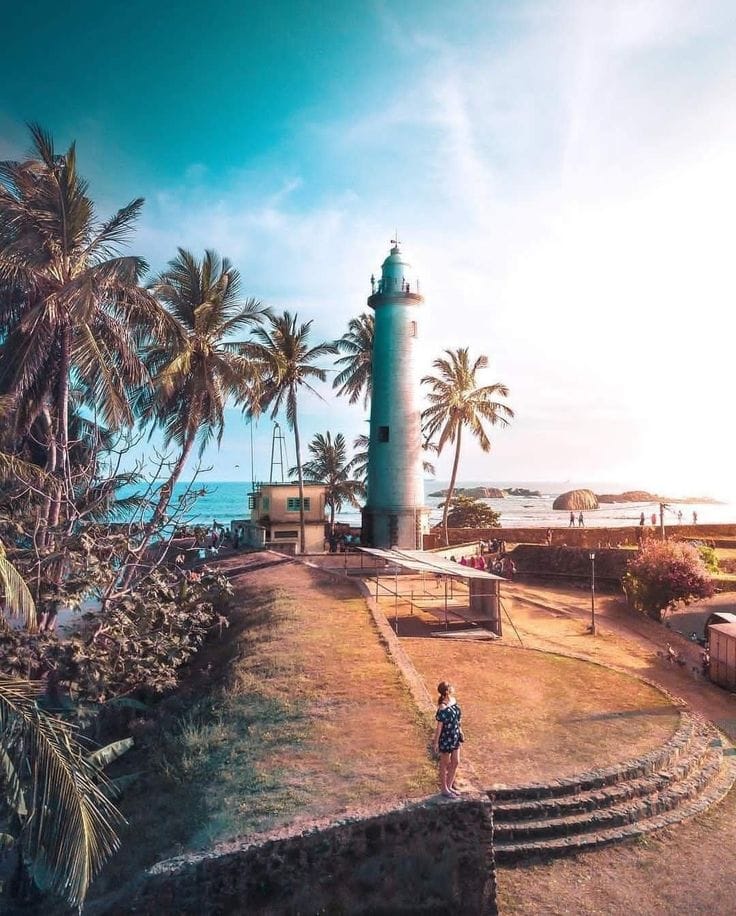
Travel south to the coast. En route you can pause at a village monastery (Mahamewawa style) and later wander through the Galle Dutch Fort precinct, while Galle itself is a colonial complex (UNESCO) best experienced with context: your guide relates how Portuguese, Dutch and British eras shaped trade, architecture and culinary fusion in the island’s south. Arrive at the coast and feel the tropical air: ocean rhythms are restorative in their own right.
Why visit: Galle Fort’s layered colonial history and coastal culture are a restful cultural counterpoint to inland healing rituals.
Practical: Wear comfortable walking shoes for cobbles; shade and hydration are essential. Image idea: colonial street with bougainvillea against old walls.
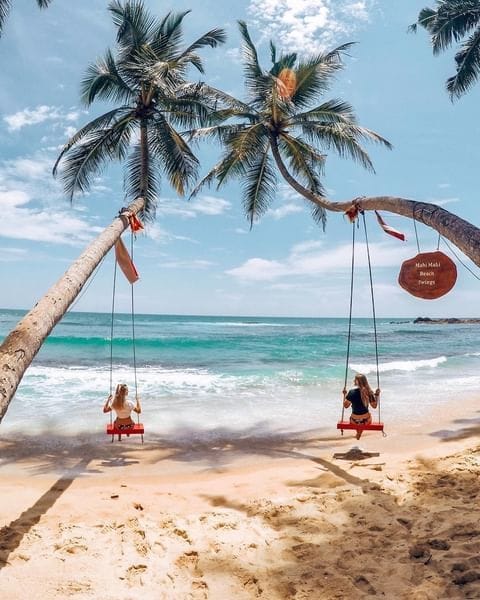
By the sea, your Ayurveda sessions are tailored to gentle, restorative treatments—think light oil massages (Abhyanga) and calming herbal compresses to relieve any residual tension. Your guide ensures continuity with earlier treatments, advising post-treatment rest and supportive meal choices (fresh fish, local greens, mild kitchari-style dishes).
Why visit: Coastal climates combined with lightweight therapies are ideal for immune support and stress reduction.
Practical:Plan for a rest period after treatments; sunscreen and hydration recommended later in the day. Image idea: seaside massage pavilion with palm backdrop.
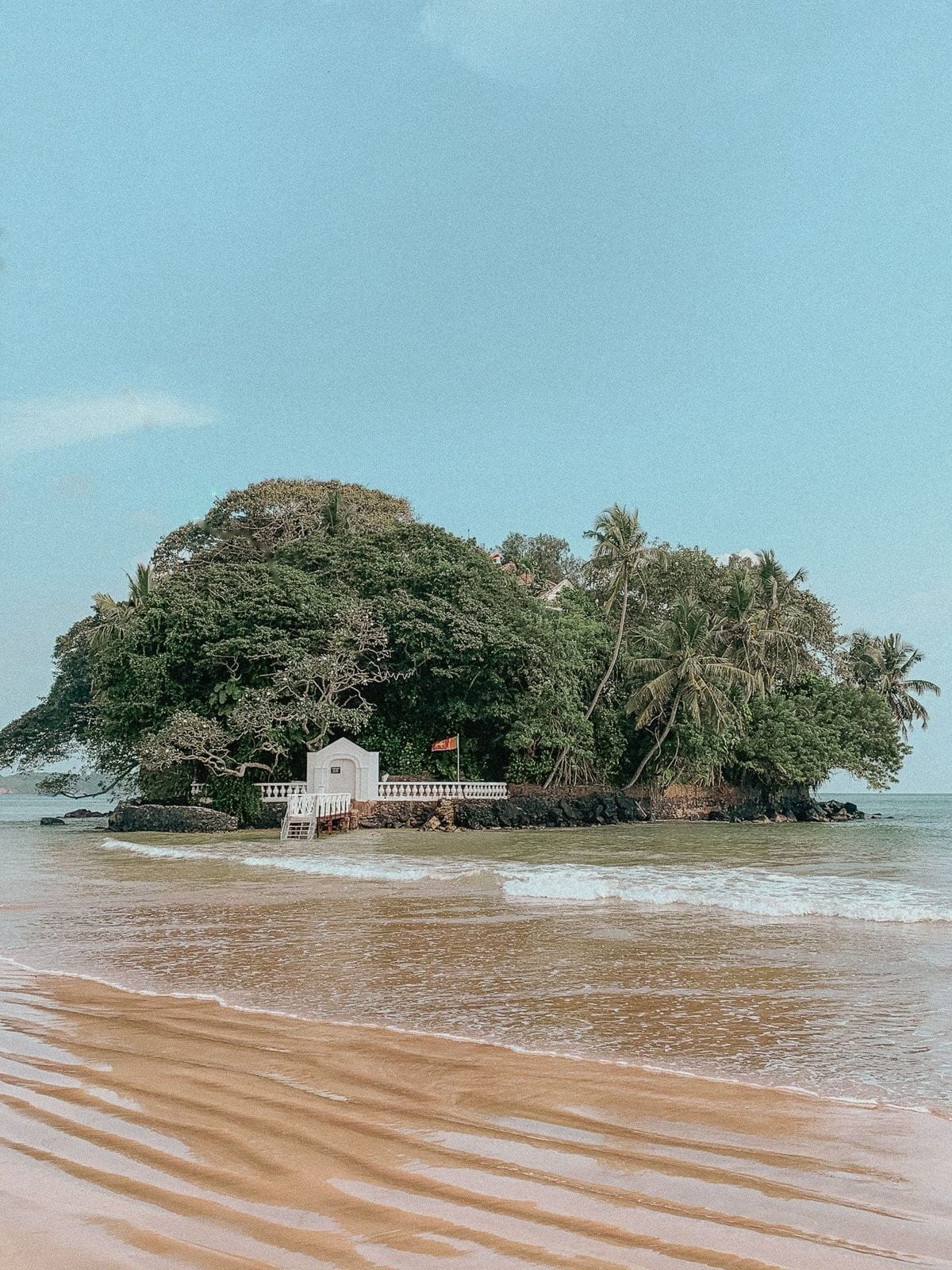
Begin with yoga and meditation within or near a temple setting (respectfully arranged). Buddhist temple gardens and temple bo trees (Ficus religiosa) create a quiet environment for sitting practice. Your guide explains Buddhist mindfulness traditions and how they complement Ayurvedic lifestyle practices, breath, moderation, and daily rituals.
Why visit: Combining somatic practice (yoga) with contemplative traditions deepens long-term resilience and mental clarity.
Practical: Modest clothing advisable; bring a shawl for meditation chill. Image idea: yoga mats under a large bo tree at dawn.
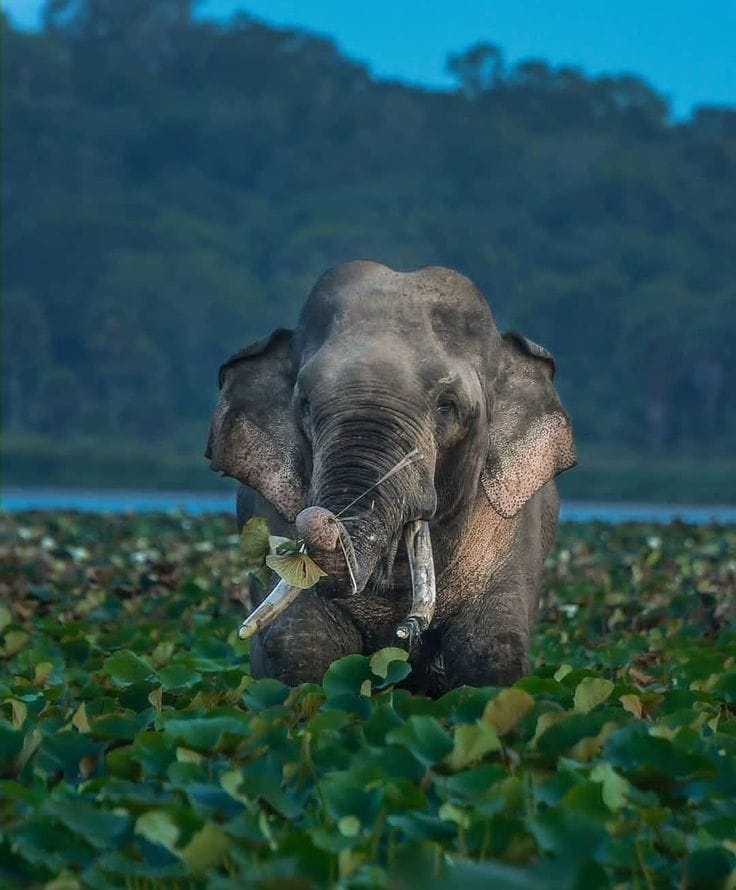
An early transfer takes you to Udawalawe National Park for a half-day or evening jeep safari (depending on schedule). Your guide explains wildlife ecology and conservation issues, specifically elephant corridors, human-elephant conflict mitigation, and how sustainable tourism supports local livelihoods. Seeing elephants in the wild provides a powerful reminder of the interconnectedness of wellbeing, human and ecological.
Why visit:Udawalawe is a globally recognized destination for observing wild elephant behavior at close (but safe) range.
Practical:Binoculars and camera with zoom lens advised; safari windows open early morning and at dusk for best sightings. Image idea: elephant herd at a waterhole at dusk.
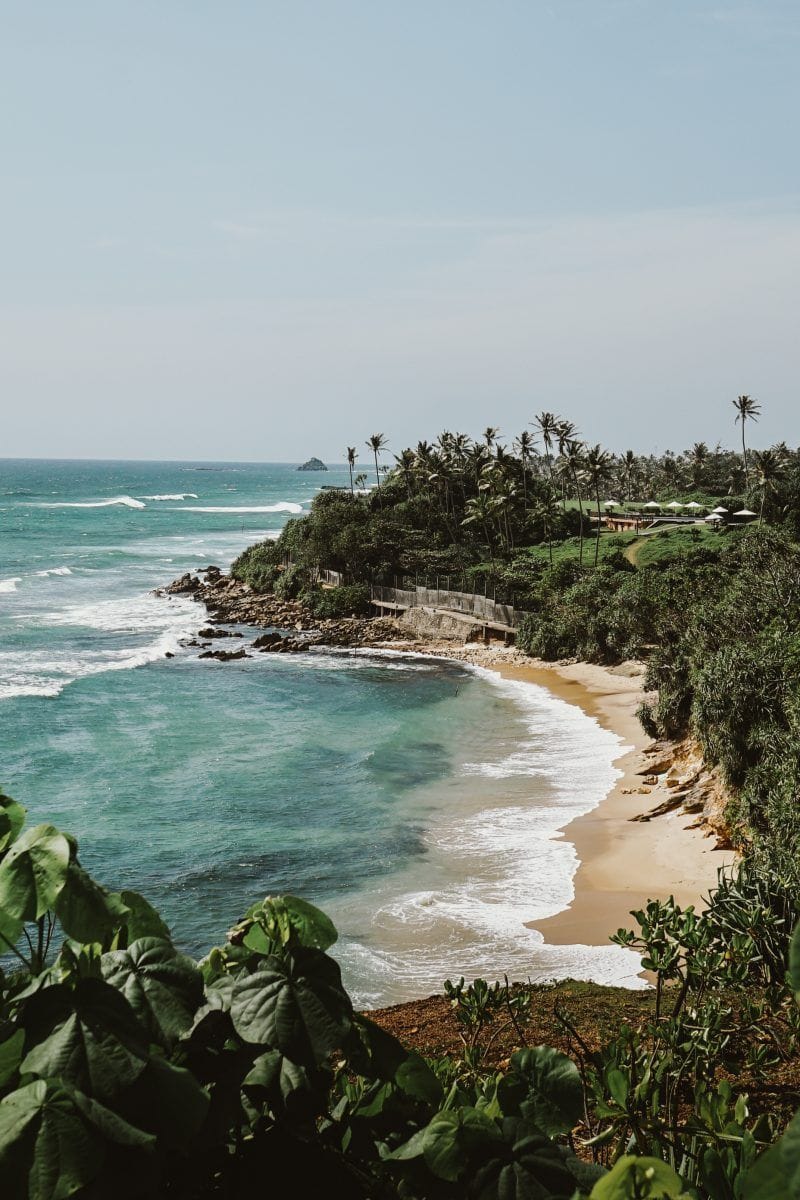
Spend the morning in a restorative yoga practice on Jungle Beach, a secluded cove where the sea and forest converge. In the afternoon you’ll participate in a second tree-planting session, this time with a coastal restoration partner planting native coastal trees to stabilize dunes and support shorebird habitats. Your guide explains how mangrove and coastal planting protect shorelines and fisheries.
Why visit:Active conservation participation reinforces the retreat’s sustainable mission and connects you physically to the landscape you’ve enjoyed.
Practical: Comfortable water-safe shoes if planting near dunes; sunscreen and a wide-brim hat. Image idea: group planting along a low dune ridge with ocean behind.
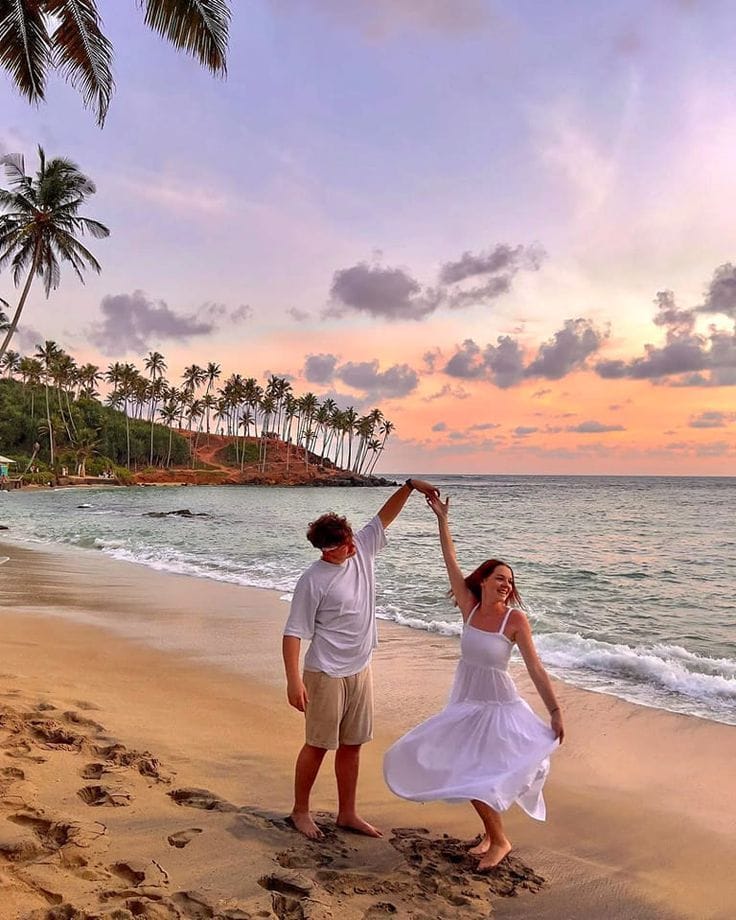
Return toward the west and spend a day of gentle leisure in Negombo. This is time for a final massage, reflective journaling, last minute shopping for Ayurveda herbal blends, or a calm beach walk. Your guide will review your aftercare plan — dietary and yoga practices to continue at home — and provide a personalized wellness sheet with suggestions from the Vaidya.
Why visit: A soft exit day helps consolidate gains from a long retreat; your guide’s follow-up advice increases chances of sustaining benefits months later.
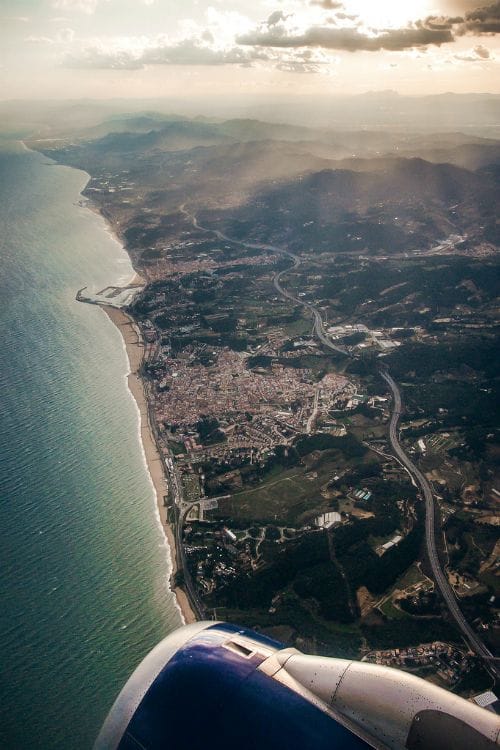
Your guide transfers you to the airport in your luxury vehicle, assists with check-in, and ensures any needed documentation (e.g., medical notes or product receipts) is in order. You depart with not only photographs and memories but a practical plan to continue the wellness habits you learned on the island.
Your comfort is part of your wellness journey. We provide luxury SUVs, sedans, and minibuses with spacious seating, air-conditioning, and professional English-speaking chauffeurs. Every ride ensures safety, relaxation, and the flexibility to pause for scenic views.
The best time for this itinerary is December to April, when the hill country is misty yet clear and the south coast enjoys sunny days. The cultural triangle is accessible year-round.
Light cotton clothes, yoga wear, swimsuits, and comfortable trekking shoes. A shawl or light sweater for Kandy evenings, and modest attire for temples. Don’t forget sun protection, reusable water bottles, and insect repellent.
Respect temple customs: cover shoulders and knees, remove shoes, and avoid loud conversation. Use the greeting Ayubowan with palms together as a gesture of respect. Always ask before photographing locals, monks, or rituals.
Carry some local currency (LKR) for village and market purchases. Travel between regions can be slow due to winding roads, so allow time for rest stops. Wi-Fi is widely available, but use the slower pace as part of your mindfulness journey. throughout.
The Soulful Journey is more than an itinerary, it is a passage through landscapes, traditions, and healing rituals that gently reshape the way you see the world and yourself.


Subscribe to receive curated Sri Lanka travel ideas, from Globeenjoy Tours.
We respect your privacy. No spam. Unsubscribe anytime.